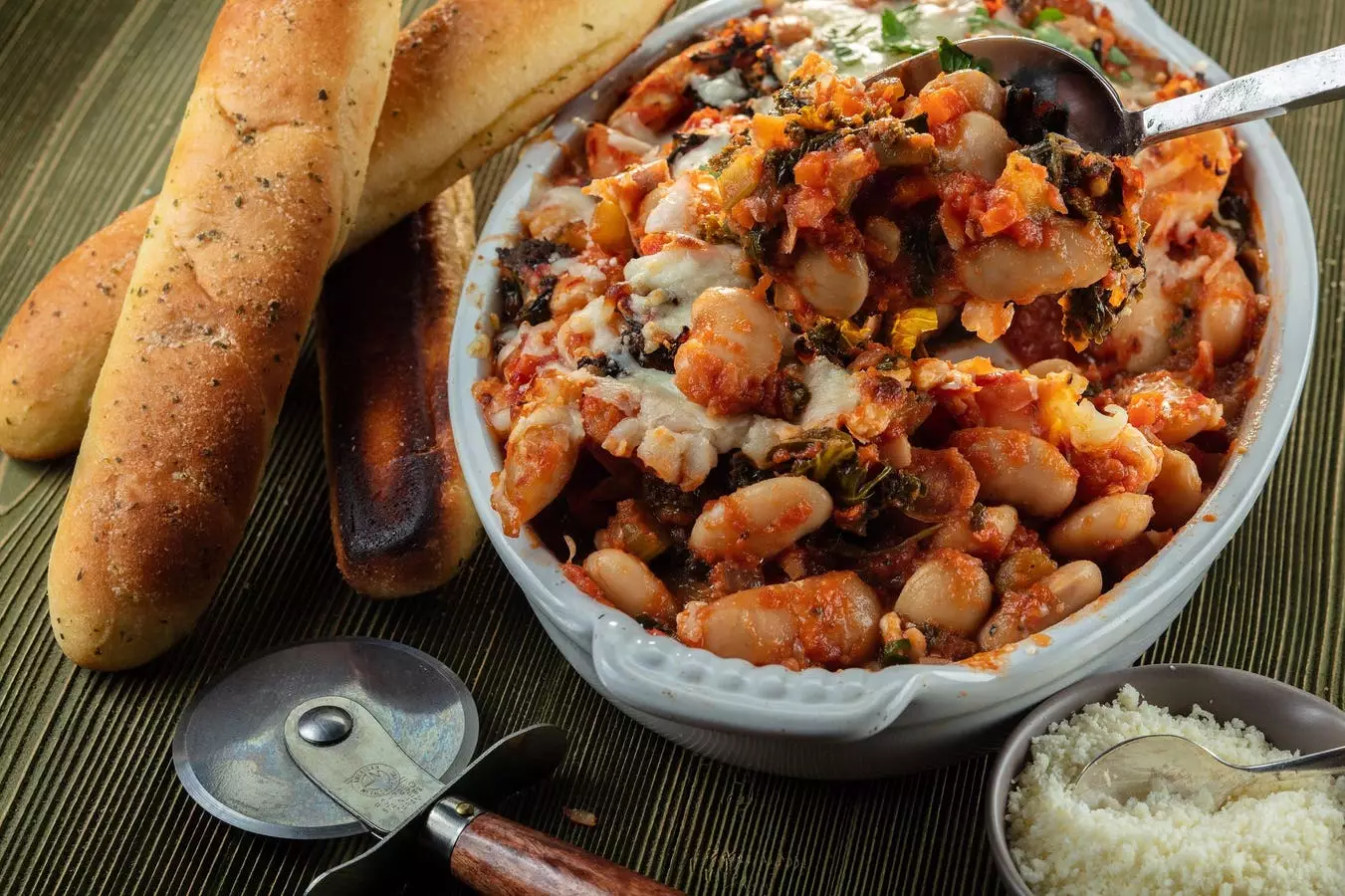Originally crafted to be a heartwarming comfort food, Pizza Beans from Deb Perelman’s beloved Smitten Kitchen cookbook have unexpectedly stepped into the spotlight under the most bizarre circumstances. Rather than staying nestled among families’ favorite recipes, Pizza Beans have claimed notoriety due to their unexpected appearance on a prison menu linked to a high-profile murder case. The fascination with this humble casserole took an unexpected twist when news broke that Luigi Mangione, a suspect in the murder of Brian Thompson, the former CEO of UnitedHealthcare, was served Pizza Beans during his incarceration. This rather mundane detail sparked a frenzy of media attention, transforming a simple dish into a symbol of both culinary nostalgia and true crime intrigue.
What began as an accessible recipe, celebrated for its ease of preparation and comforting combination of flavors, has morphed into a catalyst for social media engagement and a viral phenomenon. The timing of TMZ’s report regarding Mangione’s prison fare coincided with the increasing public interest in infamous criminal stories, effectively marrying food culture with a gripping murder tale. Suddenly, Pizza Beans were at the forefront of cultural discussions, spawning memes and conversations that intertwined the everyday with the sensational.
Pizza Beans, a recipe introduced originally in 2017, combines the heartiness of Greek-style baked beans with the pleasing indulgence associated with baked ziti. Its creative removal of pasta in favor of beans, alongside layers of vibrant ingredients such as crushed tomatoes, kale, garlic, and both parmesan and mozzarella, leads to a dish that is both nourishing and versatile. While this recipe was constructed in the spirit of everyday cooking, its leap into the limelight has shifted perceptions of what was once a cozy culinary choice.
As the news of Pizza Beans circulated, it was met with an influx of social media activity that highlighted society’s penchant for turning mundane elements of life into objects of fascination. The curious juxtaposition of something as simple as food served in prison against the stark backdrop of an alleged murder brought an unexpected depth to the conversation around the subject. Suddenly, the public had tethered a seemingly unimportant aspect of the criminal case to the larger narrative, engaging in both humor and introspection.
The immediate reaction fueled a renaissance of sorts for the recipe itself, as search engines saw a spike in queries about Pizza Beans, and social networks lit up with memes expressing both admiration for the dish and bewilderment over its newfound fame. This trend showcases not only our appetite for true crime stories but our innate desire to find connection points in lives that feel uniquely distant from our own.
Delving into the psyche behind this cultural moment reveals deeper currents of empathy and connection. The persona of Luigi Mangione, wrapped in the shroud of a murder suspect, becomes more relatable through the lens of everyday life when observed through his meals. The act of recounting the food he eats in prison reframes our engagement with his story, enabling a conversation that elicits both curiosity and compassion. People are drawn to the idea that even amid grave circumstances, normalcy exists.
In essence, this fascination reflects broader socio-cultural behaviors: we find meaning in the small, humanizing details that resonate with our own experiences. The allure of Pizza Beans thrives not merely on the eccentricity of its association with a murder suspect but illustrates a collective yearning to explore the intricate interface between the ordinary and extraordinary.
The encapsulating story of Pizza Beans is much more than a quirky food trend emerging from a true crime narrative; it embodies the intricate ways in which media and society weave together various threads of human experience. In highlighting the simultaneous connections of comfort food and criminality, it reveals our shared humanity, even in the most perplexing circumstances.
Pizza Beans serve as a mirrored reflection of societal interests in human behavior, storytelling, and the emotional connections that we, as spectators, build with varying narratives in our world. This dish, once relegated to the depths of cookbooks and family meals, has leapfrogged into the complexity of culture itself, encouraging discourse that straddles food, crime, and communal humanity.


Leave a Reply